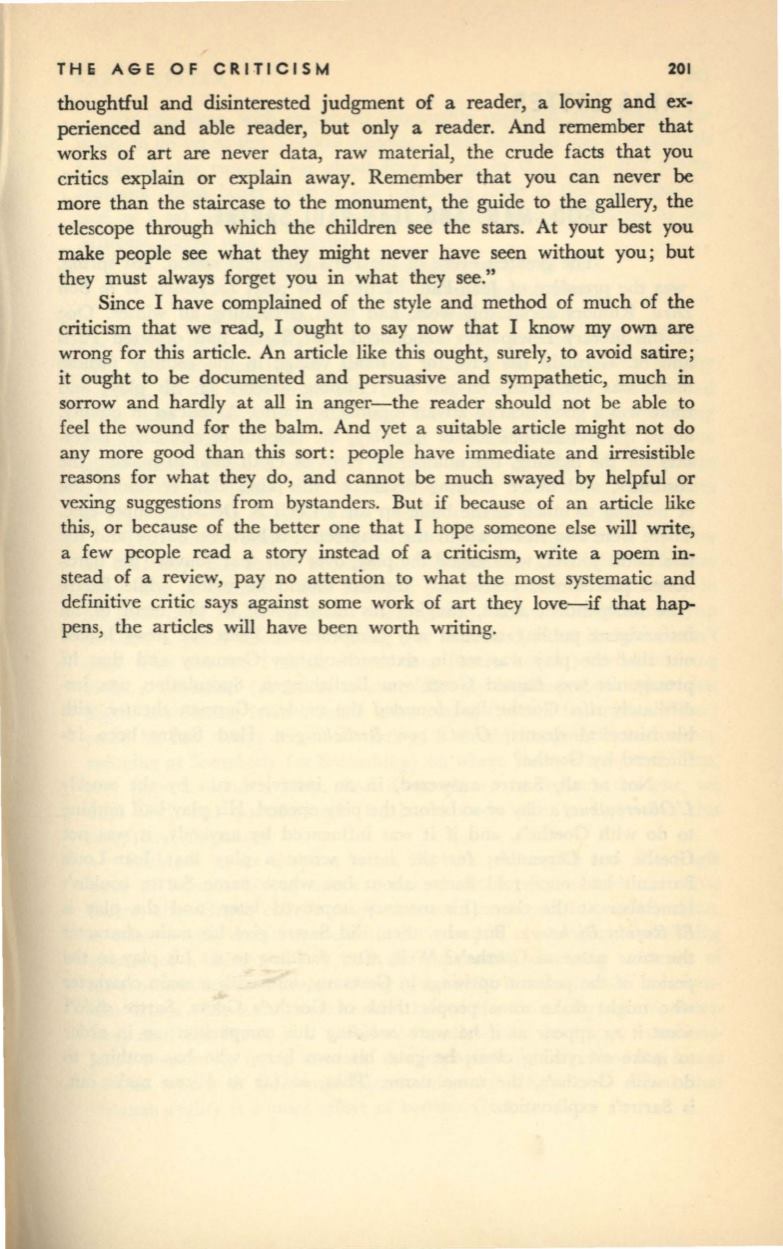
THE AGE OF CRITICISM
201
thoughtful and disinterested judgment of a reader, a loving and ex–
perienced and able reader, but only a reader. And remember that
works of art are never data, raw material, the crude facts that you
critics explain or explain away. Remember that you can never be
more than the staircase to the monument, the guide
to
the gallery, the
telescope through which the children see the stars. At your best you
make people see what they might never have seen without you; but
they must always forget you in what they see."
Since I have complained of the style and method of much of the
criticism that we read, I ought to say now that I know my own are
wrong for this article. An article like this ought, surely, to avoid satire;
it ought to be documented and persuasive and sympathetic, much
in
sorrow and hardly at all in anger-the reader should not be able to
feel the wound for the balm. And yet a suitable article might not do
any more good than this sort: people have immediate and irresistible
reasons for what they do, and cannot
be
much swayed by helpful or
vexing suggestions from bystanders. But if because of an article like
this, or because of the better one that I hope someone else will write,
a few people read a story instead of a criticism, write a poem in–
stead of a review, pay no attention to what the most systematic and
definitive critic says against some work of art they love-if that hap–
pens, the articles will have been worth writing.


